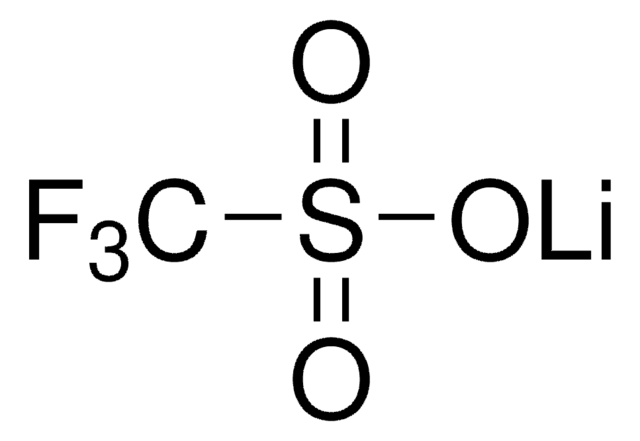Key Documents
30-2730
Titanium(IV) oxide
JIS special grade, ≥99.0%
Synonim(y):
Titania, Titanium dioxide
About This Item
Polecane produkty
klasa czystości
JIS special grade
Próba
≥99.0%
Postać
solid
skład
rutile, ~90%
przydatność reakcji
reagent type: catalyst
core: titanium
dostępność
available only in Japan
mp
>350 °C (lit.)
gęstość
4.26 g/mL at 25 °C (lit.)
temp. przechowywania
15-25°C
ciąg SMILES
O=[Ti]=O
InChI
1S/2O.Ti
Klucz InChI
GWEVSGVZZGPLCZ-UHFFFAOYSA-N
Szukasz podobnych produktów? Odwiedź Przewodnik dotyczący porównywania produktów
Powiązane kategorie
Kod klasy składowania
11 - Combustible Solids
Klasa zagrożenia wodnego (WGK)
nwg
Temperatura zapłonu (°F)
Not applicable
Temperatura zapłonu (°C)
Not applicable
Certyfikaty analizy (CoA)
Poszukaj Certyfikaty analizy (CoA), wpisując numer partii/serii produktów. Numery serii i partii można znaleźć na etykiecie produktu po słowach „seria” lub „partia”.
Masz już ten produkt?
Dokumenty związane z niedawno zakupionymi produktami zostały zamieszczone w Bibliotece dokumentów.
Nasz zespół naukowców ma doświadczenie we wszystkich obszarach badań, w tym w naukach przyrodniczych, materiałoznawstwie, syntezie chemicznej, chromatografii, analityce i wielu innych dziedzinach.
Skontaktuj się z zespołem ds. pomocy technicznej



